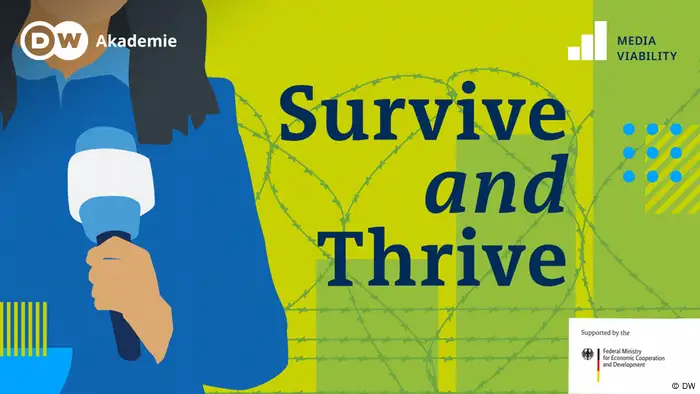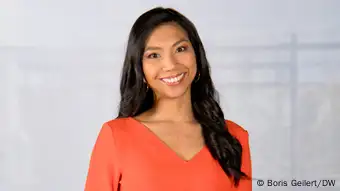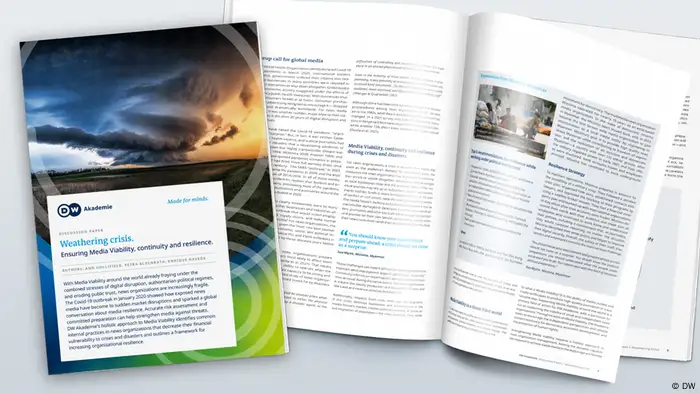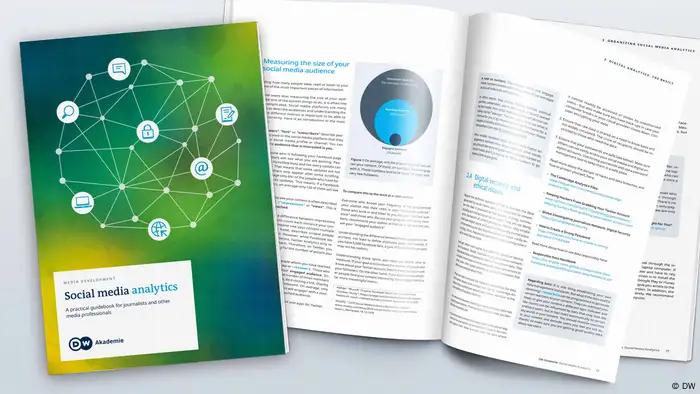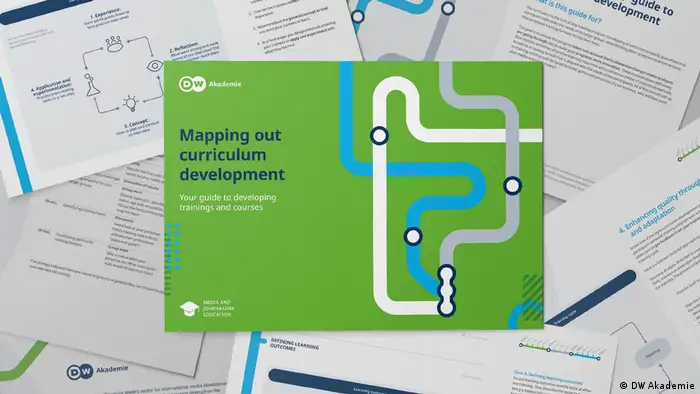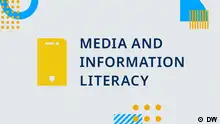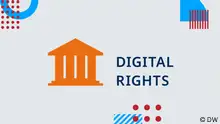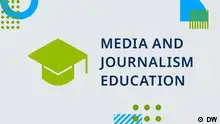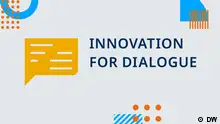Survive and Thrive
Media viability podcast: Links and recommendations that can help your media outlet survive and thrive
We’re wrapping up season one of "Survive and Thrive: The Media Viability Podcast" with a look back at the excellent guests we had this year, and a collection of links and recommendations that you might find helpful.
Here at DW Akademie, we define media viability as the ability of media outlets and media landscapes to produce high-quality journalism in a sustainable way. Supporting media viability around the world is one of our primary fields of action.
Media around the globe face an existential struggle. How can they deliver their audiences fact-based news while staying financially afloat? How can they make sure they are viable and resilient enough to weather even times of crisis?
The many challenges they face include increasing restrictions on press freedom and freedom of expression, as well as authoritarian political regimes, increasing disinformation campaigns and eroding public trust. In addition, many news organizations have been affected by the pandemic, natural disasters, cyberattacks, violent conflicts or even war.
So how do media outlets worldwide overcome these challenges? What motivates media professionals to continue?
In the first season of "Survive and Thrive: The Media Viability Podcast," host Janelle Dumalaon spoke with media managers, founders and journalists from around the world to find out their funding models, success strategies and what they had learned from mistakes.
Safety and security are essential to a media outlet’s viability
Our podcast got underway in April 2023 with our host welcoming the first guest, Iryna Vidanava, co-founder of City Dog from Belarus. The online magazine was originally based in Minsk but after repressions and intimidation she and her team left the country and now report from exile.
For Vidanava and her team, preparation is the key to resilience: "We had prepared security protocols for different scenarios by August 2020. Nobody could imagine the extent of brutality, but we were more or less prepared for what might happen, and we had protocols for how to act," she said.
Andrii Dikhtiarenko, journalist and owner of the Ukrainian outlet Realnaya Gazeta spoke about similar experiences when he and his team had to leave the occupied Donbas region: "Try to work online because your office could be ruined at any time. Your colleagues can be everywhere, and you need to have [safety] protocols."
Our final guest of season one was Isabela Ponce Ycaza, co-founder and editorial director of the Ecuadorian media outlet GK. She and her team also recently experienced first-hand how changing circumstances put pressure on the media: "Ecuador wasn’t considered a dangerous or violent country before," she told the podcast host, "but it’s a shifting environment." Serious threats against team members and the murder this year of a former journalist who was running for president had the team revise their security measures, she said.
Working in an insecure environment under at times drastic security measures can pose a challenge to journalists' mental health. It also puts an additional strain on media companies' budgets, and is an industry where production can be very expensive even under normal circumstances, especially when it comes to long-format multimedia journalism. It’s a daily struggle and one that Isabela Ponce suspects audiences are rarely aware of: "It’s really expensive. I think this needs to be said because when someone reads the story, they usually have no idea what's behind it," she said.
DW Akademie’s discussion paper "Weathering crisis. Ensuring Media Viability, continuity and resilience” points out that most media are not adequately prepared for crises, if at all. It offers best-practice examples from managers who successfully guided their media through various setbacks. All agree that risk assessment and preparation are key to staying safe and viable.
Our free Media Resilience Scanner is a comprehensive online crisis preparation, management and recovery tool for news organizations. It guides you step-by-step through the process of evaluating your risk exposure and planning for risks your organization is likely to face. The tool also offers guidance for managing crises as they occur, and for assessing and addressing residual risks to your organization’s viability following major disruptions.
In episode two of the podcast, Salam Omer, advisor to the Iraqi independent media organization KirkukNow, said media outlets need to look ahead:
"It's the most basic thing: We have to have clear structures and we have to be ready beforehand. (…) But we usually are not ready, we are not accustomed to also preparing for cloudy days. And organizations should be ready for them."
Read more:
-
Weathering crisis: Ensuring media viability, continuity and resilience
-
Safe. Strong. Viable. - The symbiosis between Media Viability and Media Safety
-
Professional journalism against the odds: A strategy for Belarusian independent media
-
Safety and security of journalists: Results of a global analysis
-
Un protocolo modelo de seguridad para medios locales en Centroamérica y México
Pushing for societal change could be a viability strategy
In episode seven, Said Nazir, founder and director of the Tribal News Network, spoke about his media outlet’s focus on marginalized groups in Pakistan and which include Afghan refugees and women.
"Women are the most ignored population here. (…) Women are a silent audience – no one asks them. When we started focusing on women, we did some research on what their information needs are and their favorite platforms to get information from. (…) In the beginning, 5% of our sources and stories [were about] women. Now, [it’s] 50%. It’s the same for contributors: we went from 10% women to more than 40%. I think with this approach, we attracted some donors, companies and advertisement because we have unique access to the female population. Reaching out to marginalized groups has helped our sustainability."
Reaching out to audiences is also something that Imani Henrick, station manager at Kings FM Radio in rural Tanzania, considers key to the success of her media outlet. In episode five of the podcast, she said that for Kings FM, giving airtime to neglected issues has proved fruitful: "Njombe – the region that Kings FM is located in – was leading in gender-based violence issues, yet we didn't have any content addressing the issue," she recalled on the podcast.
Henrik credits Kings FM’s newly established program on gender-based violence as one reason why the number of cases has dropped, and that their reports have positively impacted the station’s viability:
"If you become a supporter of a program, you’ll leave a legacy of having supported the dissemination of information about a certain issue, maybe about women, about youth, or about gender-based violence or about malnutrition. That’s how we convince advertisers."
Diogo Cardoso was our guest on episode six. He and his team at Divergente had produced a multimedia report on a disturbing aspect of Portugal’s past, tied to racism, war and society not having come to terms with it. The report has since received several journalism awards, and Cardoso remembers the impact it had when he presented it to a live audience: “In Portugal, when we started publishing this story, we were still discussing as a society if we were a racist country or not. We were still unaware or unprepared to discuss our past. Having this story out there and presenting it to a live audience – that was really strong because you could see that at the end of the presentation, people were uncomfortable."
Many media outlets are looking for alternative storytelling models in the face of growing news fatigue. DW Akademie's new toolkit for constructive journalism details the model's possibilities.
Read more:
-
How to foster constructive dialogue? A study on radio formats in Niger, Burkina Faso and Mali
-
How to fund investigative journalism: Insights from the field and its key donors
-
After the Scoop – how investigative journalism affects media
Knowing your audience is key
In each "Survive and Thrive" episode, it was clear that being in touch with the audience is crucial. Diogo Cardoso calls it "taking journalism out of the newsroom," saying it's about stirring social debate – challenging their audience and being there on site to discuss with them.
Live events have also become a staple of audience engagement at Kings FM Radio, Imani Henrick Luvanga, and that they range from having entertaining to serious aspects:
"We now have sports events, events in which we give people food during Christmas or Eid al-Fitri holidays."
"We also initiated a football club that is owned by the radio station and where the presenters are the players. This team connects us with our audience because we ask for matches with different groups in our community, like youth or motorcycle riders, for example," she said.
For both Henrick and Cardoso, involving their audiences is about trust, credibility and connection.
One first step to getting to know your audience can be the diligent use of social media analytics. DW Akademie's guidebook is available for download in English, French, Spanish, Russian, Arabic, and Urdu.
Read more:
-
Connecting with audiences: the role of audience research in media development
-
Social media analytics: 5 Tips to better connect with your audience
Many ways to diversify revenue streams
While donor funding remains an important income source for media outlets around the world, it is increasingly clear that diversifying and uncovering new revenue streams is key for economic survival.
Diogo Cardoso said additional revenue sources for Divergente included presenting their research live and cooperating with academia.
For many media featured on the podcast, offering services has added to their financial stability. Salam Omer said his team had also applied their expertise to other areas:
“We built a very good network. We now have a very professional newsroom that can even create content for other partners. Having this experience, we can [also offer services] as trainers and as a consultancy.”
In episode four, Laura Aguirre, co-founder of the El Salvadorean feminist media outlet Alharaca, said she and her team now also offer consulting: “We do communication strategies for clients and campaigns about gender and diversity. (…) Having specialized in this, we had a very good year. We realized that in El Salvador and Central America, there's a need for an agency that could speak about and take the lead on these topics.”
Isabela Ponce said with her outlet GK, she and her team juggle up to six different revenue streams at a time, including a content agency and the GK School that offers workshops and trainings for other media professionals.
If one of your goals is to also support journalists and media workers, you will need a well-designed curriculum – the core of any training program. Our step-by-step guidegives trainers ideas and tips, and assists them in developing a curriculum for their media and journalism education training.
Read more:
-
'From start to success' — Handbook to support startups striving for media viability
-
More than money: Rethinking Media Viability in the digital age
Learning from mistakes
As part of "Survive and Thrive," Janelle Dumalaon also asks guests about things that went wrong. Here are a few things they said they learned the hard way:
-
Don’t forget that a media organization is a company and needs a structure.
-
Think about money from the beginning. Don’t start a media company on idealism only.
-
Don’t rely on one big revenue stream only.
-
Don’t carbon-copy other media – even if what they do seems to work for them.
-
Don't apply for grants you don’t want. You might end up stuck in projects you don’t love.
What’s up next?
Season two of “Survive and Thrive” gets underway in January 2024. Stay tuned!
Is there something you’d love to hear about? Contact us at: dw-akademie.surviveandthrive@dw.com
You can subscribe to the #surviveandthrive newsletter on LinkedIn, find the audio podcast on all major podcasting platforms, and the video episodes on DW Akademie's YouTube channel.
DW recommends
Audios and videos on the topic
- Date 15.12.2023
- Author Eva-Maria Senftleben
- Keywords DW Akademie, media viability, podcast, survive and thrive
- Feedback: Send us your feedback.
- Print Print this page
- Permalink https://p.dw.com/p/4a8sR
- Date 15.12.2023
- Author Eva-Maria Senftleben
- Keywords DW Akademie, media viability, podcast, survive and thrive
- Send us your feedback.
- Print Print this page
- Permalink https://p.dw.com/p/4a8sR

